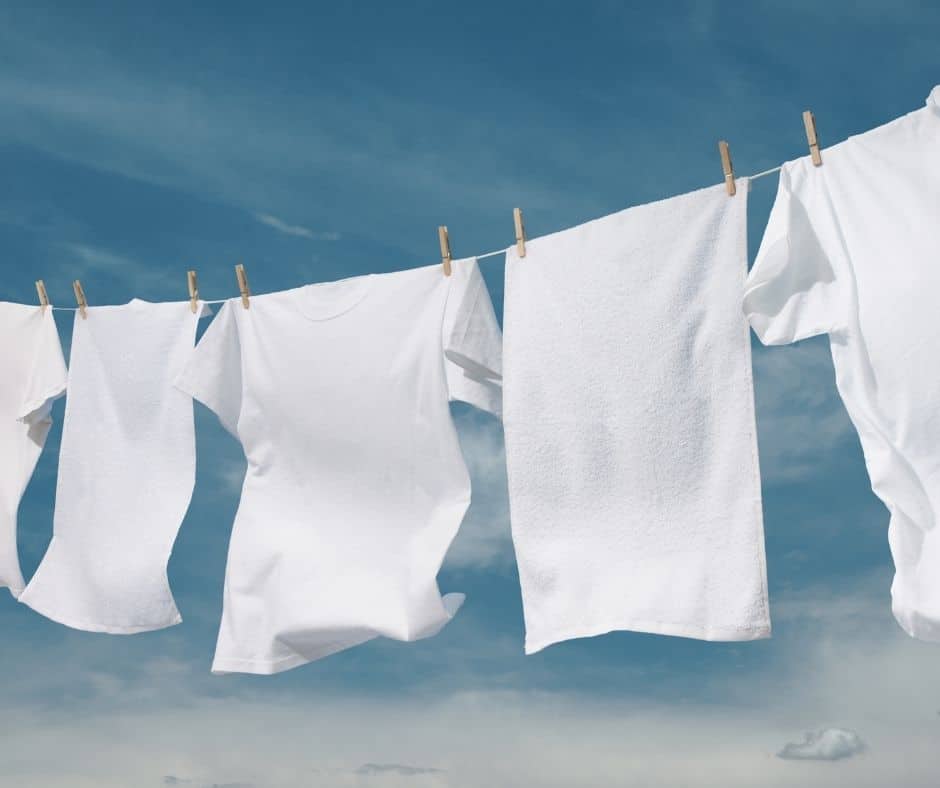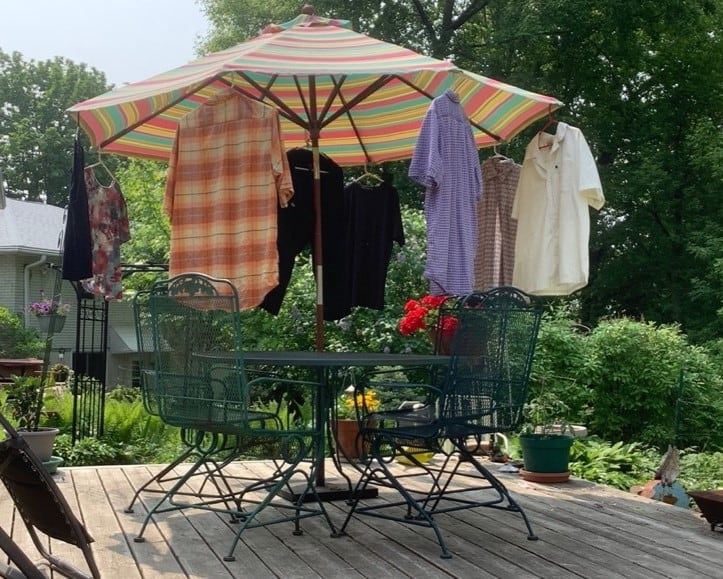

As part of our commitment to Earth via our Laudato Si’ Action Plan, we are inviting everyone who shares in our charism to take a monthly Eco-Challenge with us.
Hang your clothes to dry
Imagine yourself outside on a warm, sunny day, perhaps with a little breeze in the air…a perfect day to dry your laundry using the ever-present energy of the sun and wind, while getting a little exercise in the process.
Five amazing benefits of drying clothes in the sun
Drying clothes in the sun can have a lot of benefits over using a clothes dryer. Let’s take a look at the top five reasons to dry your clothes outside in the sun.
- Saves energy and money: Not only is drying clothes in the sun good for the environment it can also save you a lot of money compared to using a clothes dryer. Some estimates say that if every household in the United Kingdom hung one load of washing per week instead of using a dryer, they could save around a million tons of CO2 each year. Line drying your clothes in the sun is completely free after the initial small investment in a line and clothespins.
- Helps clothes last longer: Another benefit of drying clothes in the sun is that they will last longer. Why? There are a couple of reasons. Firstly, tumble drying often shrinks clothes, which is is very unlikely to happen with air dying. Secondly, drying clothes in the sun is gentler than tumble drying. The heat and agitation of a tumble dryer can stress fabric and fastenings and damage clothes. If you dry them on the line, they will just be gently blowing in the breeze.
- Lightens stains and brightens whites: You’ve probably heard of the sun’s natural bleaching properties before. This is thanks to the ultraviolet rays that make direct sunlight an effective stain remover. As a result, drying clothes in the sun is particularly useful for lightening tough stains. Natural sunlight works on white clothing, sheets, towels and cloth diapers that can become discolored fast.
- Removes odors and enhances freshness: Direct sunlight breaks down the DNA of any bacteria living on your clothes and essentially kills it. It also helps to remove odors. In fact, drying your clothes in the sun for just a few hours can remove unpleasant smells from smoke, food and mildew completely.
- Quicker and safer than drying indoors: The final major benefit of drying clothes in the sun compared to using an indoor clothes dryer is that it is a much quicker process. This is because the heat from the sun’s rays warms the water molecules in the fabric and warm water evaporates faster than the cold water on your wet clothes that goes into your clothes dryer. Outdoor drying is also better for your health and your home. Hanging clothes to dry indoors will increase the moisture in the household air, which can eventually lead to a buildup of mold.
Drying clothes outdoors
Here are some tips for hanging laundry outside.
- Avoid areas that birds frequent and those near fruiting trees, unless you’d like to rewash your clothes.
- Sunshine can help keep your light-colored clothes looking bright, but it can also fade darker-colored fabrics.
- A good shake when hanging up your clothes and again when taking them down has two benefits: it reduces wrinkles and clears off any insects or pollen that may have settled on your laundry.
- Hang items firmly but not too tight to avoid stretching the fabric.
- It’s best to avoid line-drying for sweaters and other stretchy fabrics. Lay them flat in a spot with good ventilation instead.
- Check to see when clothing is dry—some pieces will dry more quickly than others.
No clothesline? If you have a patio or deck table with an umbrella, that can serve as a drying line for clothes on hangers. Larger items like sheets or blankets can air dried outside by arranging them over clean patio furniture in the sun.


Hang drying inside
If drying laundry outside is not an option for you, consider using a drying rack inside your home. Drying laundry inside can be done year-round, no matter the weather, and you still get the benefits of saving energy and avoiding the wear-and-tear of the dryer. Plus, line-drying inside adds some indoor humidity in the very dry winter months.
There are many options available for drying racks large and small, from simple collapsible wooden ones to racks that can attach to a wall or fit over a door to racks with fold-out “wings” for drying items that need to lie flat, like sweaters.
Drying racks provide an efficient way to hang clothes, but clothing can be hung from anything that works for you. A shower rod or towel bar can double as a hanging rack, especially for items on hangers, like shirts or pants.
Drying will go faster if you leave some space between items to allow airflow. You can also use a portable fan to speed up drying or place the rack near a heating vent.
Take the Eco-Challenge
How many of these actions will you take this month?
Spread the word
- Leave a comment about how you’re taking the challenge below.
- Invite others to take the June Eco-Challenge by sharing our post on Facebook and Instagram.
I will try as best I can to use less energy.
Some of the fibers in knit clothing can contaminate and are better not drying in a dryer. Also use of dryer sheets can clog filters and can cause fires. If you have to dry clothes use dryer balls.
I will commit to hanging all of my laundry for the month of August, but am already doing at least half if not all hanging and not using the dryer. Thanks for the challenge.
I have moved to hanging my clothes in the basement so I don’t have t worry about rain or the birds.
Thanks for the tips and reminders!
I am fortunate enough to have a basement. We hang to dry in it, which has the added benefit of not needing to take things down before the rain. Beware of hanging your clothes on metal furniture as in the picture, it can leave rust lines.